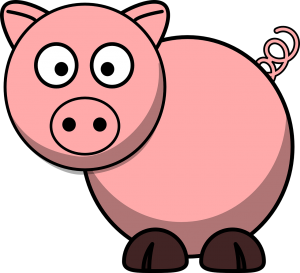
Everyone has some memory of their parent or grandparent singing This Little Piggy on their toes as young children, pointing to each toe and referring to it as different little piggy. One goes to market, one has roast beef and another screams “wee” all the way home. Not only is This Little Piggy one of many nursery rhymes that ends in tickles and giggles, it is also a counting game for young children, demonstrating the basics of counting through reference and rhyme. This rhyme is so well known that the original intention of the rhyme has been forgotten in the modern era. Which brings us to the question of where did This Little Piggy originate from?
Originally known as The Nurse’s Song, early variations first appeared in 1728. Throughout the 18th and 19th centuries, it appeared sporadically in publications and went through several modifications with the terms ‘The Little Piggy’ becoming part of the lyrics in the mid-20th century. Thus bringing it to the modern version that we currently recognize:
“This little piggie went to market,
This little piggie stayed home,
This little piggie had roast beef,
This little piggie had none,
And this little piggie cried, “Wee! Wee! Wee!
All the way home.”
As the lyrics are dissected and analyzed, we realize that the rhyme’s origins may be less merry than the one we sing along to today. The first little piggy went to market, but not to buy groceries. Instead, to be sold. The other piggy stayed home to help keep the pig pen filled with other newborn piglets. The piggy that had roast beef needs to fatten up before it makes its own trip to the market. The other piggy needs to loose some weight before making its own journey to the market. As for the final piggy, there is a debate on it yelling “Wee, wee, wee”. One interpretation suggests that it’s out of fear at the prospect of going to market. While other interpretations suggest the rhyme is French in origin and the little piggy screams “Oui! oui! oui!” (Yes! Yes! Yes!), celebrating its escape to freedom!
Widely regarded as a counting game, in years past it was more likely used as a lesson for basic farming. To sell pigs at the market you had to know which ones to fatten up and which ones to keep in order to breed more pigs. Like all nursery rhymes, it offers us a lesson. While it may not be a moral lesson, it’s still catchy and memorable enough to keep singing and dancing along to today.